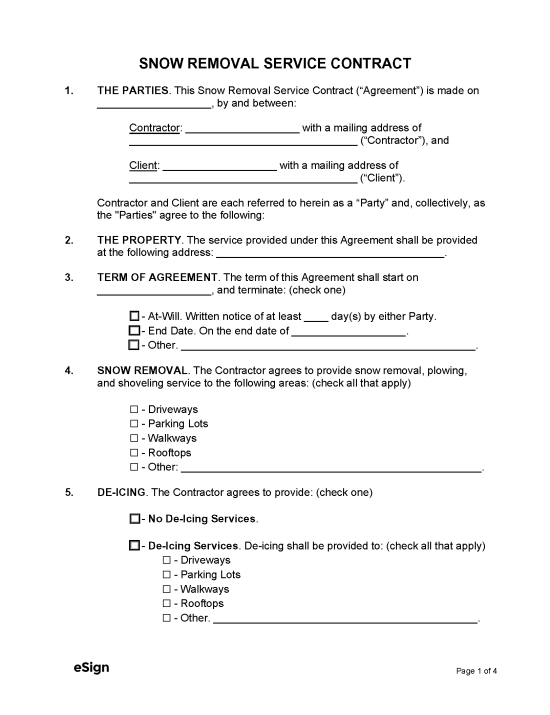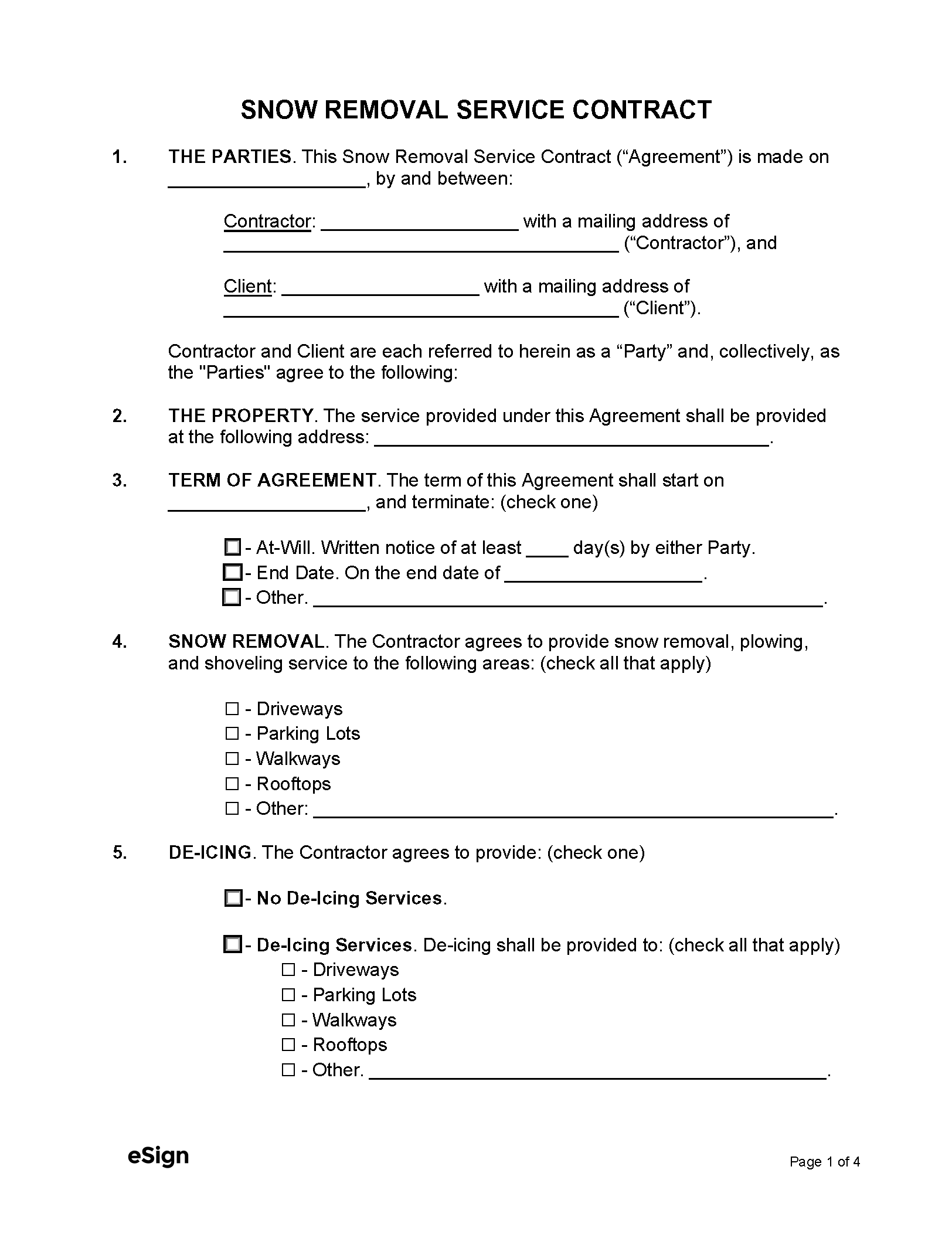
A snow removal contract is a legal document between a client and a contractor who agrees to remove snow from their property. The services relayed in the agreement could include plowing, shovelling, or de-icing driveways and walkways. A well-written snow removal contract will set clear expectations and provide liability protection for both parties.
A snow removal contract is a legal document between a client and a contractor who agrees to remove snow from their property. The services relayed in the agreement could include plowing, shovelling, or de-icing driveways and walkways. A well-written snow removal contract will set clear expectations and provide liability protection for both parties.
PDF Download
A snow removal contract is a legal document between a client and a contractor who agrees to remove snow from their property. The services relayed in the agreement could include plowing, shovelling, or de-icing driveways and walkways. A well-written snow removal contract will set clear expectations and provide liability protection for both parties.
4.9 | 12 Ratings Downloads: 1,597
The duration is commonly dependent on the winter season for most areas. In case of variability, an agreement can also be subject to termination with written notice, at any time, by either the contractor or client.
Also known as a “scope of work,” it describes the services provided by the contractor and often includes:
A “snow event trigger” is a predetermined condition that defines when the contractor is required to perform their services.
Example “Trigger” – A client agrees that in any 24-hour period, snow accumulating 2 inches or more will “trigger” the contractor to perform their services.
A contractor can be paid in any of the following manners:
Retainer – To protect the contractor’s interests, they may request a retainer to ensure the client has the funds to pay for their services. Often a retainer is used for new clients where the contractor has never had a previous business relationship.
This section allows for the client to reserve the right to inspect the property after the contractor provides their services. The main purpose of this inspection is to ensure the contractor doesn’t arrive too early during an expected snowfall.
Larger Snow Storms – It is common for a client to request the contractor to return to a property after services have been carried out, to finish any remaining impact from larger winter storms.
To protect the interests of both parties, each should have a clause that releases them of liability for circumstances outside of their control.
A clause that mentions the contractor is not an employee of the client, which includes an acknowledgment that they are not liable for withholding taxes. This is important to ensure that the client is not legally liable for federal or state taxes imposed on employees.